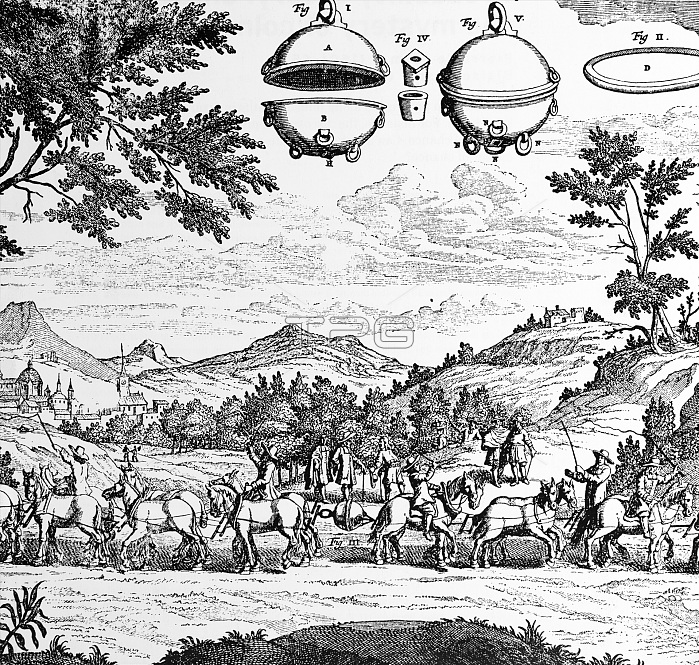
Magdeburg hemispheres experiment which demonstrated atmospheric pressure. The experiment used two brass hemispheres, seen at top. These were around 50 centimeters in diameter and designed to fit together snugly. When von Guericke pumped the air from between them, they were forced together by the external pressure of the atmosphere. This force was so strong that two teams of eight horses could not pull the hemispheres apart. When the vacuum was released they came apart easily. The experiment was conducted in the 1650s in Magdeburg, Germany. Otto von Guericke (November 30, 1602 - May 21, 1686) was a German scientist, inventor, and politician. His major scientific achievements were the establishment of the physics of vacuums, the discovery of an experimental method for clearly demonstrating electrostatic repulsion, and his advocacy of the reality of "action at a distance" and of "absolute space". Around 1650 von Guericke invented a vacuum pump consisting of a piston and an air gun cylinder with two-way flaps designed to pull air out of whatever vessel it was connected to, and used it to investigate the properties of the vacuum in many experiments.
| px | px | dpi | = | cm | x | cm | = | MB |
Details
Creative#:
TOP22153807
Source:
達志影像
Authorization Type:
RM
Release Information:
須由TPG 完整授權
Model Release:
N/A
Property Release:
No
Right to Privacy:
No
Same folder images:

 Loading
Loading